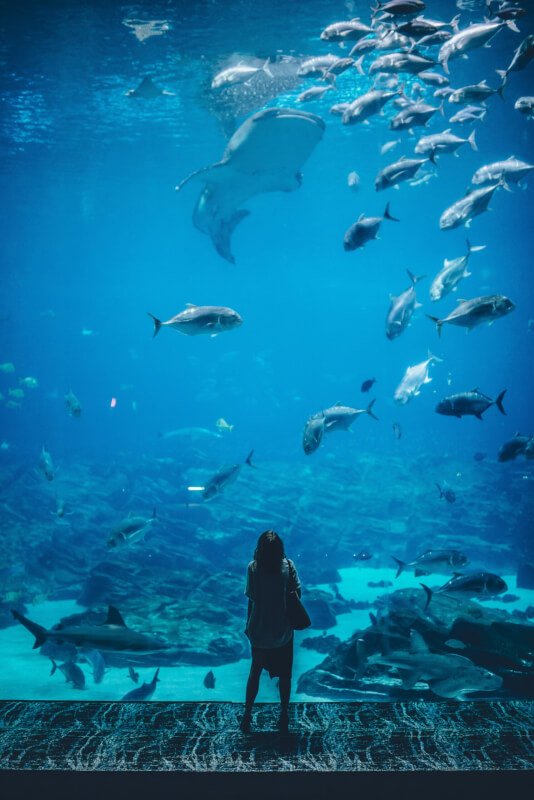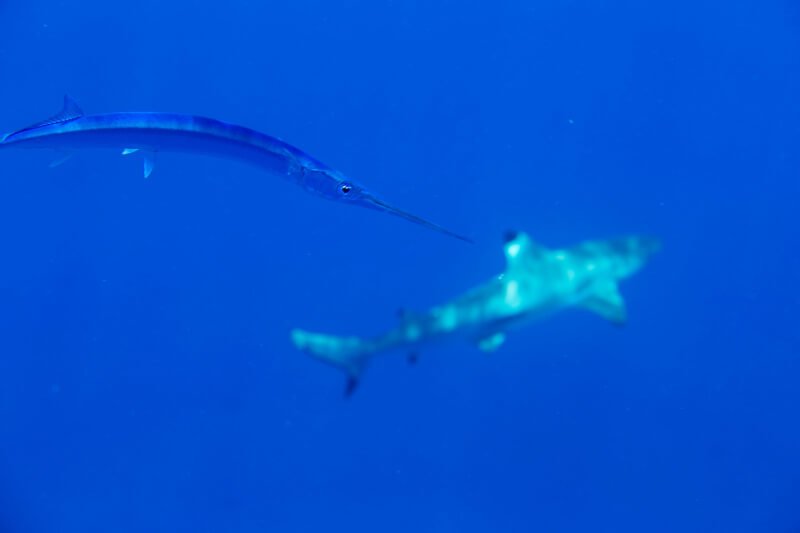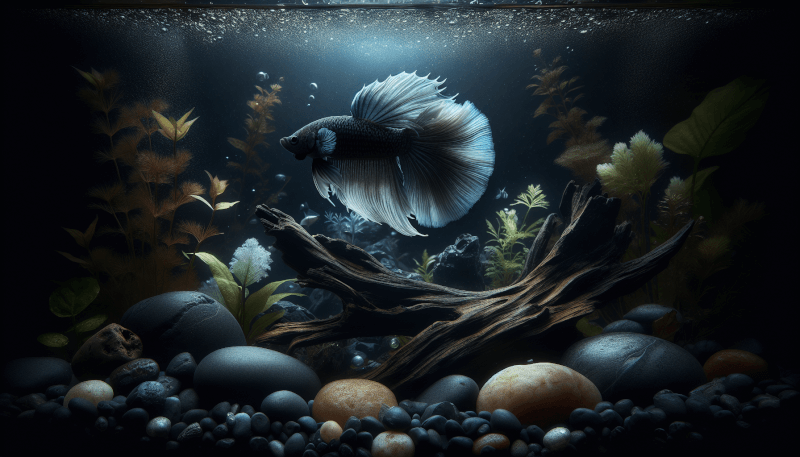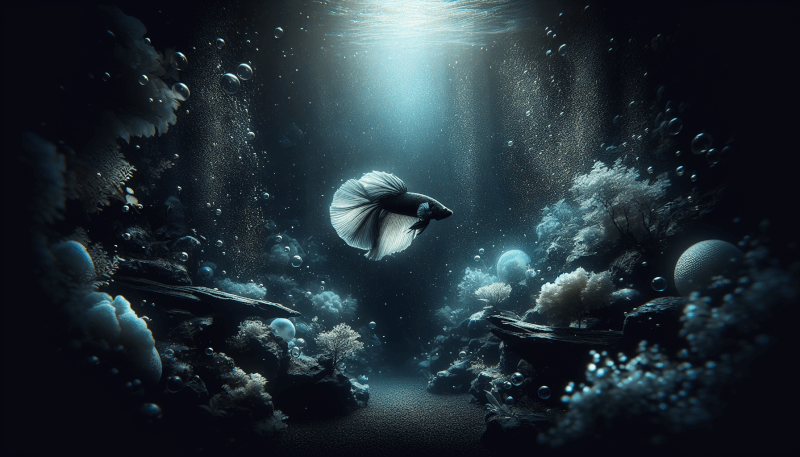Step into a world of captivating beauty as you explore the timeless elegance of Blackwater Aquarium Aesthetics. From the moment you lay your eyes on the stunning collection of aquatic life it houses, you will be transported into a mesmerizing realm where tranquility and aesthetic appeal coexist. With its dark, mysterious waters and breathtaking displays, this unique aquarium experience promises to leave you in awe of the beauty found within the depths. So prepare yourself for a journey like no other, as you immerse yourself in the enchanting world of Blackwater Aquarium Aesthetics.

What is Blackwater Aquarium?
Blackwater Aquarium is a type of aquarium that aims to replicate the unique and captivating aesthetic of natural blackwater environments. These ecosystems are found in bodies of water such as rivers and streams in rainforests, where the water is typically stained dark brown or black due to tannins released from decaying organic matter.
Definition and Features
Blackwater aquariums are characterized by their dark water, which is achieved by adding natural substances like driftwood and leaf litter into the tank. This not only creates a visually striking appearance but also provides a more natural and comfortable habitat for many fish and invertebrates that originate from blackwater environments.
The water in blackwater aquariums is typically soft and acidic, mimicking the conditions found in the natural habitats of blackwater fish species. The lack of strong lighting in these tanks further enhances the mysterious and tranquil ambiance.
Origins of Blackwater Aquariums
The concept of creating blackwater aquariums evolved from the desire to imitate the serene and beautiful environments found in the natural world. As aquarists sought to recreate specific biotopes, such as the Amazon rainforest, they began exploring methods to simulate the blackwater conditions found in these regions.
Through careful research and experimentation, it became possible to replicate the unique characteristics of blackwater environments within the confines of an aquarium. This led to the development of the blackwater aquarium, which has since gained popularity among hobbyists looking to create a stunning and immersive aquatic display.
Creating a Blackwater Aquarium
Creating a blackwater aquarium requires careful attention to various elements to ensure the desired aesthetic and environmental conditions are achieved.
Choosing the Right Tank
When selecting a tank for your blackwater aquarium, it is important to consider the size and shape that will best suit the fish and plants you plan to keep. A larger tank will provide more stability and a more natural habitat for your aquatic inhabitants. Additionally, tanks with dark-colored backgrounds can further enhance the visual impact of the dark water.
Setting up the Substrate
Choosing the right substrate is crucial in mimicking the natural environment of a blackwater aquarium. Opt for darker substrates, such as sand or fine gravel, to resemble the soft, muddy riverbeds of these ecosystems. These substrates not only contribute to the overall aesthetic but also provide a suitable substrate for rooted plants and microorganisms.
Selecting Appropriate Plants
Selecting plants that thrive in low-light conditions and soft, acidic water is essential for a successful blackwater aquarium. Some ideal choices include various species of Cryptocoryne, Anubias, Java Fern, and Java Moss. These plants not only add to the aesthetic appeal but also help maintain water quality by absorbing excess nutrients and providing shelter for fish and invertebrates.
Adding Driftwood and Leaf Litter
The addition of driftwood and leaf litter is critical in achieving the blackwater aesthetic. Driftwood releases tannins into the water, which are responsible for the characteristic dark brown color. Additionally, leaf litter serves as a natural food source and hiding spot for certain fish and invertebrates. Make sure to use driftwood that has been properly cured and soaked to prevent any unwanted effects on water chemistry.
Creating the Desired Water Chemistry
To accurately replicate the water chemistry of blackwater environments, it is crucial to adjust the pH and hardness levels. Most blackwater fish prefer slightly acidic water with a pH ranging from 5.0 to 7.0. Achieving this can be done by utilizing natural methods, such as the use of leaves and botanical extracts, or through the use of specific water conditioners designed for blackwater aquariums.

The Importance of Lighting
Lighting plays a significant role in the overall appearance and success of a blackwater aquarium.
Simulating Natural Lighting Conditions
To achieve the most natural and appealing effect, it is important to replicate the relatively dim lighting found in blackwater ecosystems. Avoid intense and bright lighting, as it can detract from the desired aesthetic. Instead, opt for low-intensity lighting fixtures that provide a warm and gentle illumination, similar to the dappled sunlight that filters through the rainforest canopy.
Artificial Lighting Options
Several lighting options are suitable for blackwater aquariums. LED lights with adjustable brightness and color temperature settings allow you to customize the lighting to create the perfect ambiance for your aquarium. Additionally, fluorescent and compact fluorescent lights can also be used to provide a soft and diffused light that complements the dark water.
Choosing Fish and Invertebrates
Selecting the right fish and invertebrates is essential for a successful blackwater aquarium.
Popular Blackwater Fish Species
There are numerous fish species that thrive in blackwater environments and make excellent choices for blackwater aquariums. Some popular options include tetras like the Cardinal Tetra and Neon Tetra, as well as species like the Apistogramma, Discus, and Corydoras catfish. These fish are well-adapted to the soft, acidic water conditions and often display vibrant colors that contrast beautifully with the dark water.
Considerations for Compatible Tank Mates
When choosing tank mates for your blackwater aquarium, it is essential to consider the compatibility of the various species. Some fish and invertebrates have specific requirements or behavioral tendencies that may not be suitable for a blackwater environment. Researching each species thoroughly and consulting with knowledgeable aquarium experts will help ensure a harmonious and well-suited community of aquatic life.
Interesting Invertebrate Options
In addition to fish, blackwater aquariums can also house a variety of fascinating invertebrates. Species such as the Bamboo Shrimp, Vampire Shrimp, and various freshwater snails can thrive in the soft, acidic water conditions. These invertebrates not only contribute to the biodiversity of the tank but also serve functional roles, such as algae control and substrate maintenance.

Maintaining Water Quality
Maintaining water quality is crucial for the health and well-being of the inhabitants in a blackwater aquarium.
Filter Systems for Blackwater Aquariums
Utilizing an appropriate filter system is essential for maintaining water clarity and quality. Consider using gentle filtration methods, such as sponge filters, as they do not disrupt the natural flow and reduce the risk of removing tannins from the water. It is important to strike a balance between maintaining proper water parameters while still providing a natural and well-filtered environment for your aquatic life.
Regular Water Testing and Maintenance Routines
Regular water testing is necessary to monitor the vital parameters of the aquarium, such as pH, ammonia, nitrite, and nitrate levels. This will help catch any potential issues early on and allow for necessary adjustments to maintain optimal water conditions. Additionally, regular maintenance routines, such as partial water changes and substrate cleaning, are crucial to remove excess nutrients and maintain the overall health of the aquarium ecosystem.
Aquascape and Design
Creating a visually appealing aquascape is an integral part of a successful blackwater aquarium.
Creating a Natural-Looking Aquascape
When designing the layout of your blackwater aquarium, consider replicating the natural features and structures found in the habitats of blackwater environments. Utilize driftwood and rocks to create interesting focal points and provide hiding spots for fish and invertebrates. Carefully consider the placement of plants to achieve a balanced and aesthetically pleasing arrangement that mimics nature.
Strategic Placement of Decor and Plants
Strategic placement of decor and plants can create depth, visual interest, and focal points within the aquarium. Experiment with different arrangements and consider foreground, mid-ground, and background plants to add dimension. Furthermore, position driftwood and leaf litter to create shaded areas and simulate the natural habitat of blackwater fish and invertebrates.

Feeding and Nutrition
Providing proper nutrition is essential for the health and vitality of the aquatic inhabitants in a blackwater aquarium.
Special Considerations for Blackwater Fish
Blackwater fish species often have specific dietary requirements that may differ from those of other fish. Research the natural diets of the species you intend to keep and adjust their diet accordingly. Blackwater fish often benefit from live or frozen foods, such as bloodworms, brine shrimp, and daphnia, as these closely resemble their natural prey.
Variety in Diet for Balanced Nutrition
To ensure a well-rounded diet that provides all necessary nutrients, it is important to offer a variety of food options. This can include high-quality flakes or pellets, freeze-dried or frozen foods, and occasional live foods. Providing a diverse diet will help prevent nutritional deficiencies and maintain the overall health of your aquatic inhabitants.
Water Changes and Routine Care
Proper water changes and routine care are vital for the long-term success of a blackwater aquarium.
Frequency and Volume of Water Changes
The frequency and volume of water changes in a blackwater aquarium will depend on factors such as the stocking level, filtration system, and water quality. Generally, regular partial water changes of around 20-25% every 1-2 weeks are recommended. However, it is important to monitor water parameters and adjust the frequency or volume of water changes as necessary to maintain optimal conditions.
Cleaning and Maintaining the Tank
Regular maintenance of the tank is essential for keeping it clean and healthy. This includes removing any debris or uneaten food, gently cleaning the glass, and maintaining the cleanliness of the substrate. Additionally, pruning and removing any unhealthy or overgrown plants will help maintain a balanced ecosystem and prevent nutrient imbalances.

Managing Algae Growth
Effectively managing algae growth is crucial for the overall appearance and health of a blackwater aquarium.
Preventing and Controlling Algae in Blackwater Aquariums
Maintaining a healthy algae balance is key to preventing excessive algae growth in a blackwater aquarium. Avoid overfeeding, as uneaten food can contribute to increased nutrient levels, leading to algae blooms. Additionally, maintaining appropriate lighting levels and controlling the duration of light exposure can help minimize algae growth. Regular maintenance, such as removing excess algae manually and using algae-control products sparingly, should be part of the routine care routine.
Balancing Light, Nutrients, and Water Parameters
Achieving the right balance between lighting, nutrient levels, and water parameters is essential to prevent algae overgrowth. Proper lighting intensity and duration, coupled with regular water testing and appropriate fertilization for plants, will help maintain a balanced ecosystem. It is important to find the right equilibrium to promote healthy plant growth while minimizing excessive algae growth.
Benefits and Challenges of Blackwater Aquariums
Blackwater aquariums offer a unique and captivating aesthetic, but they also present certain benefits and challenges.
Creating a Calming and Natural Environment
The tranquil and natural ambiance of a blackwater aquarium can create a calming and soothing atmosphere in any space. The dark water, gentle lighting, and carefully chosen plants and decor contribute to a serene and natural environment that can be enjoyed by both the inhabitants and the observer.
Potential Challenges and Additional Care Requirements
While immensely rewarding, creating and maintaining a blackwater aquarium comes with its challenges. The specific care requirements and compatibility considerations for blackwater fish and invertebrates can be more complex compared to other types of aquariums. The additional effort required to maintain optimal water conditions, prevent excessive algae growth, and meet the specific needs of the inhabitants is necessary to ensure the long-term success and health of the aquarium.
In conclusion, blackwater aquariums offer a truly captivating and aesthetically pleasing experience for aquarists seeking a unique and immersive aquatic display. By carefully replicating the features and conditions of natural blackwater environments, it is possible to create a striking and natural-looking aquarium that provides a comfortable and stimulating habitat for a variety of fish and invertebrates. With proper attention to all aspects of tank setup, maintenance, and care, a blackwater aquarium can become a timeless centerpiece that brings the beauty of nature into your home.

